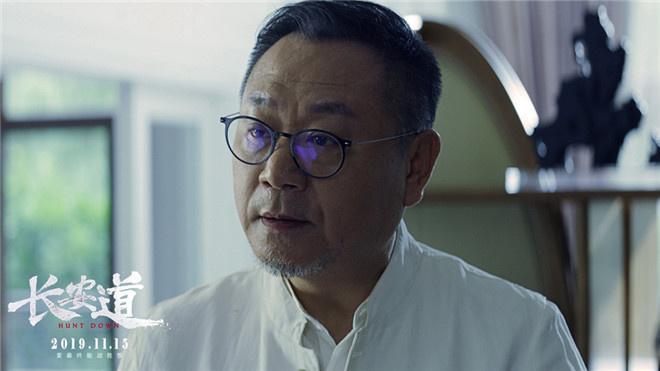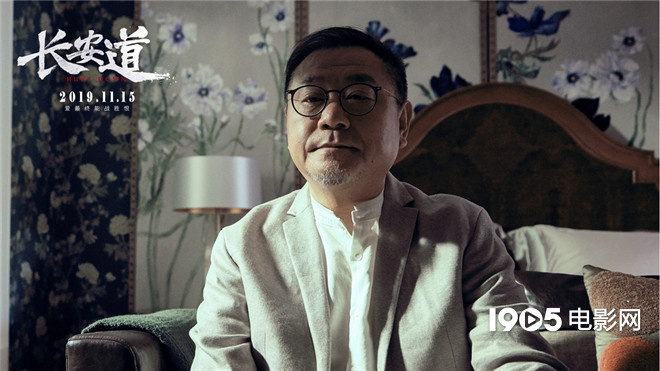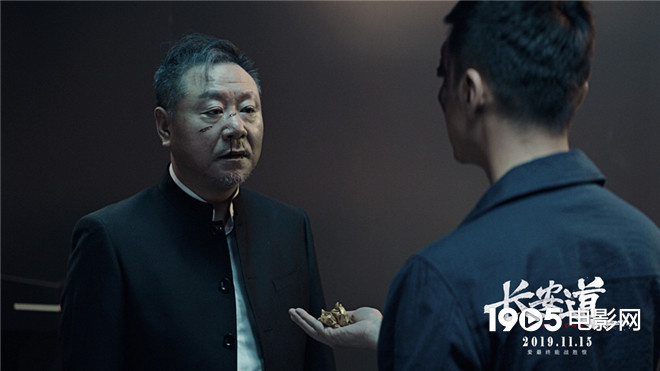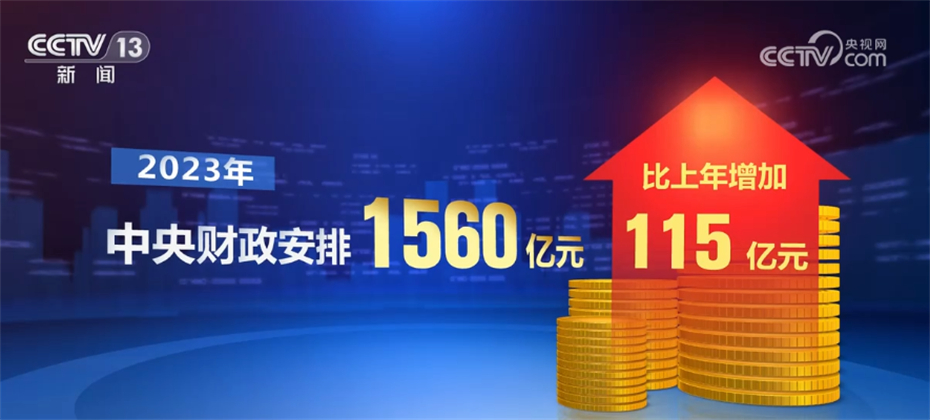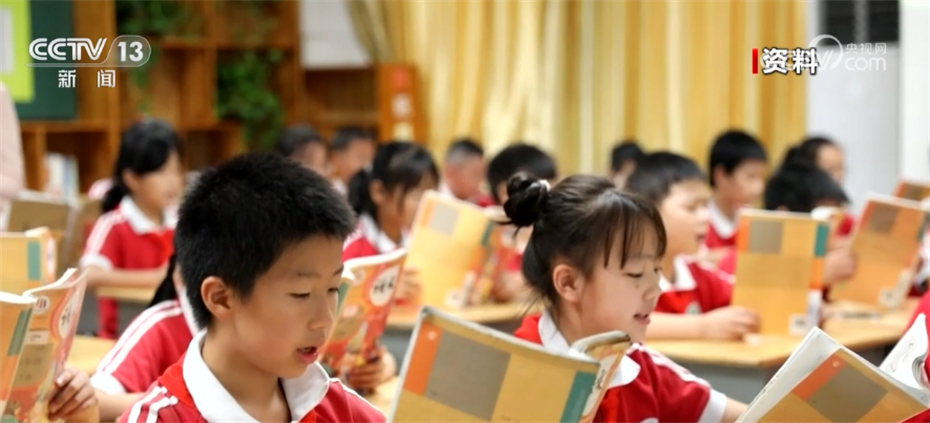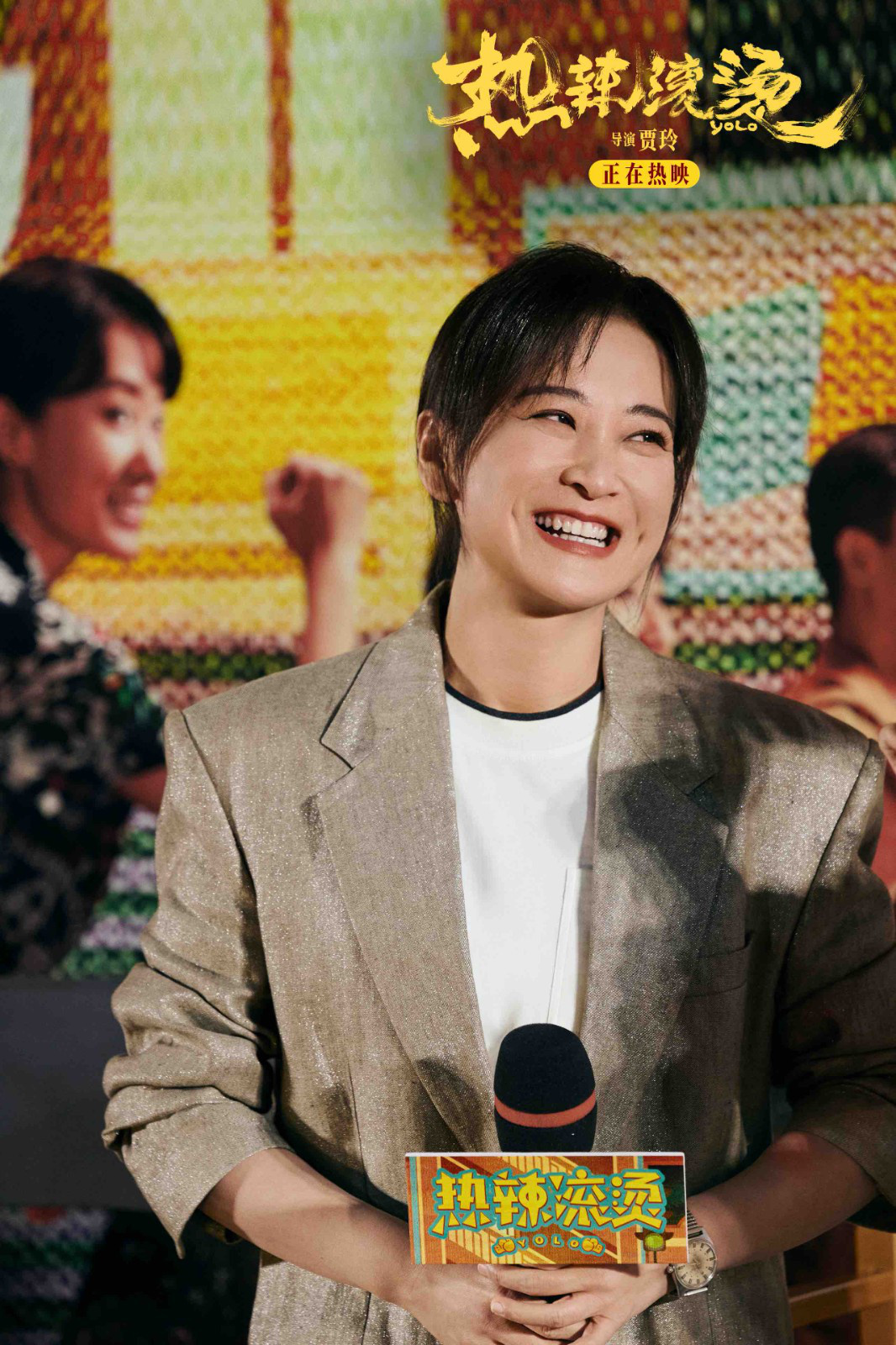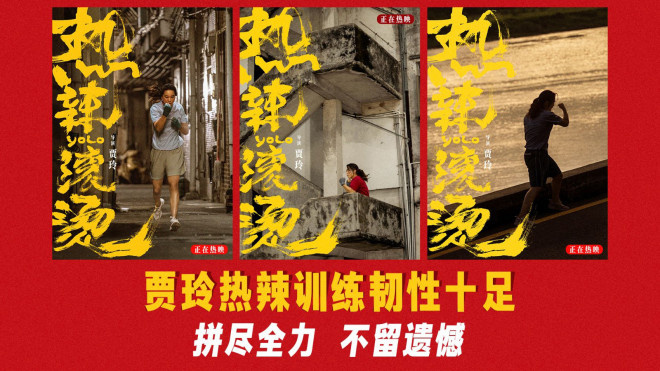There is a "Wang Po Bridge" in Yixing, 200 kilometers away from Shanghai. There is a bridge next to it.Wang Po village.In 1930s, a young woman from China, Qian Xiuling, who wore a blue cheongsam and had scientific dreams, went down the river near Wang Po village and embarked on a cruise ship bound for Europe to study. She was determined to be Madame Curie of China.
During World War II, Qian Xiuling rescued 96 captured Belgian soldiers from Nazi guns and became a well-known hero in Belgium. In the small town of Aixing on the outskirts of Brussels, there was a special road named "Qian Furen Road".
In 2001, the crew of China Women at the Gunpoint of the Gestapo visited Qian Xiuling’s home.The picture in this article is provided by the author Qian Tongxin.
Today, 70 years later, two places 9000 kilometers apart are commemorating this "mother of China" and "Belgian hero"-Qian Xiuling.
In June this year, during the Belgian King Philip and his wife’s visit to China, the Supreme Leader of president, China presented them with this book "China Women at the Gunpoint of the Gestapo". This book tells the story of Qian Xiuling’s successful rescue of nearly 100 young Belgian soldiers with the help of von Falkenhausen, the German commander in Belgium.
Qian Xiuling (March 13th, 1913-August 1st, 2008) is my great aunt. During my study in Europe in 2008, I saw the old man for the last time in Brussels. Six months later, the old man passed away. Qian Xiuling’s granddaughter tatiana filmed the documentary "Is My Grandma a Hero?" "caused a sensation in Belgium. For the last time, the film interviewed Qian Xiuling, who was 90 years old at that time, about his attitude towards life and public opinion. He filmed in China and Belgium, read a lot of historical materials and traveled all over Qian Xiuling’s footprints in China.
What I want to record is not only the story about Qian Xiuling, but also the story about the Qian family. This is not mentioned in the book China Women at the Gunpoint of the Gestapo. This article was written on the occasion of Qian Xiuling’s 103rd birthday, in memory of my grandfather Qian Xianwen (October 20th, 1922-March 16th, 2005).
In 2008, the author visited Qian Xiuling in a nursing home in Brussels while studying in Europe.
"Uncle Xi"
There is a red brick building next to the 50th Anniversary Park in Brussels, Belgium, which is located in La Fontaine de Jade, the most famous Chinese restaurant in Belgium. The owner changed it several times, but the name has not changed so far. This restaurant has a history of more than 30 years. At the most glorious time, Belgian politicians and elites gathered, and every afternoon and evening markets were packed.
The earliest owner of this restaurant was Qian Xiuling, a well-known Chinese mother who was called "Belgian national hero" in Brussels. Chinese began to understand Qian Xiuling’s story because of The Gestapo Woman at Gunpoint in China.
In Qian’s family, we all call Qian Xiuling "Uncle Xi", which is the name of his hometown in Yixing, Jiangsu Province. "Uncle" means aunt, "Uncle Xi" means small, and "Uncle Xi" means grandpa’s little aunt.She also has a sister. I almost grew up listening to the story of "Uncle Xi".
My first meeting with Uncle Xi was the most luxurious international hotel in Shanghai at that time. At that time, I was just born, and my parents said that "Uncle Xi" gave me $100 as a meeting gift, and $100 was not a small sum at that time. She also took the initiative to ask about my father’s plan to go abroad. At that time, my father came back from Jiangxi and was arranged to teach in a middle school. It was very satisfying to return to Shanghai, so he declined the kindness of "Uncle Xi".
Every time "Uncle Xi" returns to China, he gives a big banquet in Shanghai, which is a great event for Yixing’s hometown people. Relatives rushed to tell each other, rushed to buy train tickets, came to the city to "worship" and told "Uncle Xi" about their plans, hoping to get her kindness. "Uncle Xi" is a very compassionate person. The poorer people were at that time, the more they could get her help.
In fact, before the story of "Uncle Xi" was exposed by the media, the family didn’t mention it very much, perhaps because it involved Qian Zhuolun, the cousin of "Uncle Xi", who was a lieutenant general of the Kuomintang, so he became particularly sensitive at that time. According to the family’s narration, "Uncle Xi" is a struggling female scientist. Taking Madame Curie as an example, her ideal is to work in Madame Curie’s laboratory in France. I remember my primary school composition at that time, with the help of my grandfather’s memories, I wrote an article "Madame Curie in China".
In 1929, "Uncle Xi" heard that his second brother Qian Zhuoru was going to study at the University of Leuven in Belgium, so he discussed with his parents that he wanted to go with his brother. At that time, the tuition fee for the first year of the preparatory course of Leuven University was 14,000 francs, or about 1,000 yuan. Although the family background is not thin, it is still a big burden for the Qian family to study abroad for two children at the same time. My parents didn’t agree at first, but later my father was persuaded by my mother to fulfill my daughter. After arriving in Brussels, "Uncle Xi" lived up to expectations and was admitted to the coveted Chemistry Department of Leuven University with the first place, and obtained his doctorate at the age of 22. Encouraged by her, the Qian family has successively produced more than 30 doctors.
In 1931, "Uncle Xi" and his classmate Hu Gemeng came to Paris with a letter of introduction from the professor. They have only one wish, to meet their idol Madame Curie. Unfortunately, when they came to Madame Curie’s laboratory, Madame Curie was not there, so they had to return because of the trip. After this miss, they never saw each other again. Later, "Uncle Xi" often recalled this trip to Paris, which became a lifelong regret for the elderly.
In 1979, the author’s grandfather accompanied Qian Xiuling to play in Beijing’s Jiulongbi.
As far as I can remember, my grandfather has always kept the habit of writing letters to two relatives on the other side of the distant ocean from time to time. One is my uncle, and the other is "Uncle Xi". At that time, under the "support" of "Uncle Xi", the "rebellious youth" at home rushed to the capitalist hometown. However, when Chinese was in Europe, he mostly did the same thing, first working in a restaurant, and then opening his own restaurant.
The same is true of my uncle and several cousins who went with me. The "Yuquan" of "Uncle Xi" was born under such a background. On the one hand, it can have some business and income, on the other hand, it can be regarded as the "Whampoa Military Academy" that provides Chinese food for the children of Qian family.
The Old Appearance of "Yuquan Restaurant"
Who is a hero?
"Being Madame Curie of China" is Uncle Xi’s lifelong ambition. Grandpa’s education for me also hopes that I will become a person who is diligent, has ideals and pursuits, and is useful to the country like "Uncle Xi". As for the glorious deeds of "China women at the gunpoint of the Gestapo", I was never educated at that time.
The attitude of the Qian family is not positive about the literary work "China Women at the Gunpoint of the Gestapo" or the adapted TV series. The reason is very simple. We think it doesn’t reflect the real historical situation and hides the identities and details of important people. When tatiana came to China at that time, he came with a question: Everything here seems to be history only if it is recorded, and people or things that are not recorded are for you to forget.
I remember grandpa said after watching the whole series that times have changed and some things should not be avoided. One of the most important figures is Qian Zhuolun, the cousin of "Uncle Xi".
Qian Zhuolun was the director of the first hall of the Kuomintang Ministry of National Defense. From 1934 to 1938, von Falkenhausen, the chief executive of the German army in Belgium and northern France, who later helped Uncle Xi to pardon nearly 100 Belgian soldiers, served as a military adviser to the Kuomintang in China. He liked China very much and became close friends with Qian Zhuolun.
"Uncle Xi" recalled that during World War II, Germany, Italy and Japan formed an alliance, and Falkenhausen was sent to work in Japan as a military adviser. At that time, Japanese militarism had begun a full-scale invasion of China. "Uncle Xi" was worried that Falkenhausen would leak China’s secrets to the Japanese army, so she immediately wrote to her cousin Qian Zhuolun. Qian Zhuolun’s reply made the stone fall from her heart. He said that although Falkenhausen was a member of the German army, he was a trustworthy gentleman and would not do anything to betray China. With this, you can ask him for help if you encounter any difficulties in the future.
Later, "Uncle Xi" relied on this letter to find Falkenhausen and rescued nearly 100 Belgian soldiers represented by young Roger who blew up the German train. The hero behind the scenes is Qian Zhuolun, a general who works for the Kuomintang government, and the book avoids Qian Zhuolun’s identity.
For the elderly, it is also difficult for her to understand that "Uncle Xi" is renamed as "Jin Ling" in The Woman of China at the Gunpoint of the Gestapo. She leafed through the book carefully and saw that her photos were reprinted into the book. She was as excited as a child and said, This is me and this is my cousin. But seeing that the hero’s name was not her own, she asked her granddaughter tatiana who was "Jin Ling" and whether they had made a mistake.
Later, a TV director filmed a TV series for this work. This almost caused a sensation in Brussels. Once tatiana walked with "Uncle Xi":
"Why do you think they want to shoot your story?"
"Because during World War II, a China woman rescued the arrested Belgian soldier through her cousin’s relationship with the German general."
"Do you remember what they told you?"
"I don’t remember."
In tatiana’s eyes, "Uncle Xi" is the "Empress Dowager" and "Galeries Lafayette" at home. She is strict with her children and has a high authority, but in her later years, "Uncle Xi" became extremely gentle. Later, many people who interviewed "Uncle Xi" said that the old man would always smile and have a calm tone when he spoke. Although he was not satisfied with the final presentation effect of the series, "Uncle Xi" admitted that he was not angry. In her opinion, what they want to shoot is the right of the crew, and what purpose they have has long been decided. The old man knows the intention and interest behind the "hero" and can treat all this calmly. She said that these are the little things in life, and the past is the past.
In his later years, "Uncle Xi" loved Tai Chi, practiced calligraphy and immersed himself in his own independent world. She has long forgotten some things that happened in the past, but there are still some histories that are deeply engraved in the old man’s heart, such as the appearance of her father and cousin.
Children of "Uncle Xi"
"Uncle Xi" has many children, including doctors, gallery owners and idlers. She has a grandson named Jerome and a granddaughter named tatiana. Jerome and tatiana were the only two who had a relationship with China, and the other children had never been to China.
Jerome came to China to take photos. He is a professional photographer, and now he has his own studio in Chicago and often holds film exhibitions around the world. More than 20 years ago, he liked to walk through the streets of Shanghai and photograph the life in Shikumen.
Jerome’s sister tatiana is also an artist. Jerome shoots, tatiana shoots TV. In 2004, she took the photography team to China several times to shoot the documentary "Is My Grandma a Hero?" in Wang Po Bridge, Yixing’s hometown, and came to my home in Shanghai to interview my grandfather and family to learn about the historical background and family situation at that time. At that time, the Qian family was a gentry family, which could be regarded as a noble family with excellent conditions. "Uncle Xi"’ s father also set aside a house to build a school, so that all local children can come to study at home. This was a great act of kindness at that time.
"Uncle Xi" got excellent grades since he was a child. He was admitted to the preparatory class of Shanghai Datong Women’s University when he was a freshman in Jiangsu Women’s Middle School. She loves playing basketball. Although she is not tall, she recalls that she is the main force of the women’s basketball team, because she runs fast and jumps high, and can catch the ball. Seeing the photo of the basketball team at that time, her eyes lit up, as if she had gone back to 80 years ago.
Before "Uncle Xi" married the Russian doctor Grixia, his family had an engagement. That was when Uncle Xi was only 3 years old, and the other party was the son of his father’s friend. The reason why the family agreed to let "Uncle Xi" follow her second brother Qian Zhuoru to study in Brussels was because her "little fiance" was also in Belgium at that time, and the family hoped to promote this marriage as soon as possible. But after seeing each other once, Uncle Xi refused to get married on the grounds that he didn’t like it.
At that time, her father was furious, saying that she didn’t know the rules, and she was ashamed to see that friend again. He also threatened not to send tuition to "Uncle Xi". And stubborn personality makes "fine uncle" uncompromising to the death. Besides, at that time, she had been successfully admitted to Guanfeisheng (funded by boxer indemnity), and she didn’t need more money at home, so her parents had to give up. Speaking of this passage, she is always a little smug herself.
Since he left China at the age of 17 on the cruise ship "The Sphinx" bound for Marseille, "Uncle Xi" has always believed that he will go back to China to work for the motherland, and has twice planned to return to China for development. The dream of returning to China for the first time was stranded because of the outbreak of the Anti-Japanese War. In 1937, "Uncle Xi", who was struggling to find a job in Europe, planned to return to China with her husband to open a clinic. The couple happily booked a boat ticket to Shanghai via Italy on September 1. In the summer of that year, the news that Shanghai was occupied by the Japanese came. At that time, "Uncle Xi" happened to have his first child, and his plan to return to China fell through.
In 1948, the civil war between the Kuomintang and the Communist Party reached the last minute. Uncle Xi, who has found a job in the chemical laboratory of the University of Leuven in Brussels, came back to China and asked my grandfather, "Do you think communist party will win?" Grandpa is the most trusted person in Qian’s family. Grandpa is not a communist party member, but he is a faithful believer in communist party. He told Uncle Xi decisively that communist party would surely win. Later, communist party really won, but Uncle Xi didn’t come back.
In 1995, the author’s grandmother (right) took a group photo with the "Uncle Xi" couple when she went to Belgium to visit relatives.
Last bowl of small wonton
In 1996, Gracia, who had been with Uncle Xi for 60 years, died, but since then, Uncle Xi’s life has remained optimistic, and his uncle sometimes went to see him. "Uncle Xi" loves to eat small wonton, and my uncle brings it to her every time. In those days, "Uncle Xi" was in good health, with the care and companionship of family and children from time to time, and the photos of "Uncle Xi" were always radiant. Zhang Qiyue, then ambassador of China to Belgium, also visited her home with flowers on the occasion of her annual birthday.
But suddenly one day, the children sent her to a nursing home in downtown Brussels. We just heard that the children had conflicts and targeted the legacy of "Uncle Xi" and sold the old man’s residence. But none of this can be confirmed. Since then, she has rarely been visited, and her complexion has gone from bad to worse. However, my uncle will often send her small wonton. When she eats small wonton, she is always very happy. My uncle often tells us so.
In 2008, I finally came to Europe to study, and my greatest wish was to meet my idol "Madame Curie" and my great aunt Qian Xiuling. In the scene of entering Uncle Xi’s room, she sat on a yellow armchair with her back to the door and a guardrail around it to prevent her from falling. This is the loneliest figure I have seen in 20 years.
Seeing someone coming, the old man was obviously happy. She was dressed in a blue-purple flowered shirt, with white hair combed in spirit, skinny but charming. She smiled at me, the warmest smile I have seen in 20 years. As usual, my uncle took out the prepared wonton and fed it to her. Her appetite was better than I expected.
I saw a sign on the blackboard in the room saying in French: Please bring some fruits, if possible, some small wonton, and some magazines. On the table of the room, there are scattered photos of her and her family, and a photo of her with the mayor when she was awarded the "National Hero" medal. The children’s childhood photos are posted on the wall. How do you imagine how this old man, who is dying, once lived under the gun of the Gestapo, experienced changes for nearly a century and finally returned to the starting point of his life. Do not feel tears.
"Belgian Hero" Qian Xiuling Cemetery





